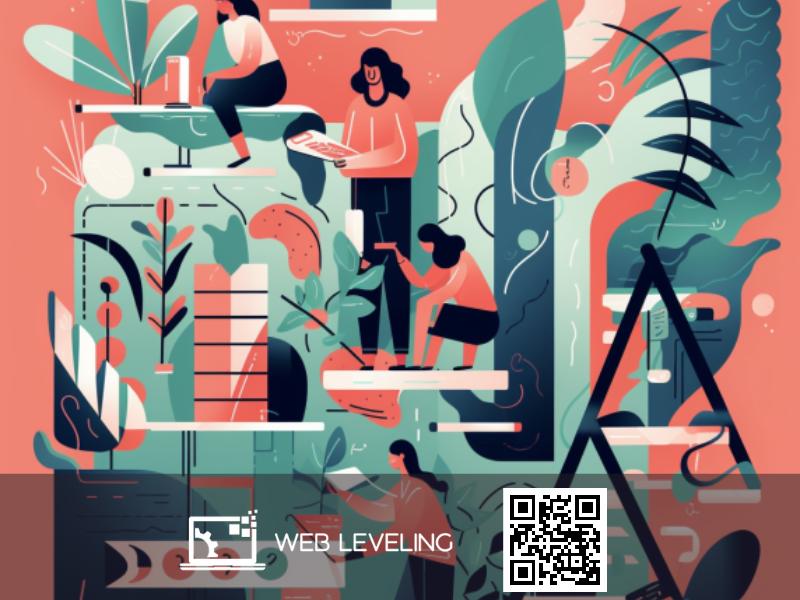Signs It’s Time to Redesign Your Website
Are you thinking about redesigning your website? It’s a big decision, and it can be hard to tell when the time is right. This article will explore some critical signs indicating it’s time for an upgrade. Whether you need more control over the design, want to modernize the look, or make navigation easier, these clues will help guide your decisions.
Has your website been feeling a bit dated lately? Maybe it has too many menus or lacks the visual appeal necessary to attract customers. If any of these scenarios sound familiar, then it might be time to consider a website redesign. The internet is constantly evolving; what worked last year may not work today. That’s why staying ahead of the curve is vital for businesses looking to maximize their digital presence.
When done correctly, a redesigned website can improve customer experiences and increase lead generation from organic traffic sources like Google search results. So if you’re ready for something new but don’t know where to start, read on! We’ve compiled all the tips needed to determine whether now is really the best time to invest in a refresh of your online presence.
What is Website Redesign?
Website redesign is an opportunity to make your website look more modern and attractive. It’s also a chance to update its content or features to serve your target audience’s needs better. A successful website redesign can help you attract customers, generate sales, and increase overall brand recognition.
Redesigning a website shouldn’t be taken lightly; various elements should be considered before taking the plunge. All must be considered when planning a website redesign, from design trends and user experience (UX) best practices to technical architecture and search engine optimization (SEO).
If any of these components were ignored during the initial build phase of your website, now might be the right time for a revamp. After all, no one wants their business stuck in the past! Investing in a well-thought-out website redesign will ensure you can keep up with current trends while providing visitors with an enjoyable online experience.

Reasons To Consider A Website Redesign
It’s easy to overlook outdated websites. After all, a website serves an essential purpose and rarely gets the attention it deserves. But it’s time to consider a redesign if your site looks dated or isn’t optimized for current user habits.
A good website should make users feel safe when they visit. If your design is cluttered with ads, pop-ups, or intrusive content, those feelings of safety will be quickly undermined. A thoughtful redesign can focus on improving the website’s overall look and feel while providing better security features that protect visitors’ data.
Redesigning your website can also give you an opportunity to improve how people interact with it. Incorporating elements such as chatbots and interactive forms can help keep visitors engaged longer and provide them with more information about your products or services. Redesigning is not just about appearances. It’s about creating an experience that encourages customers to come back repeatedly.
By making smart decisions now, you’ll benefit from improved customer engagement in the future. With careful thought into designing a secure, modern website that meets their expectations, you’ll ensure visitors have a pleasant experience every single time, leading to increased sales down the road!

Evaluating Your Site’s Performance
The journey to a successful website redesign begins with evaluation. Like the stars in the night sky, glowing brightly and inviting exploration, your site’s performance should be analyzed from multiple angles. The following table provides an overview of critical elements to consider when evaluating your web presence:
| Metric | Definition | Objective |
| Traffic Volume | Number of visits to your site per month/year | To analyze who is using your site and how frequently they visit it |
| Conversion Rate | Percentage of visitors that take a desired action (e.g., purchase something) on your page or complete a goal you have set for them | To measure success against objectives identified by the management team and stakeholders |
| Site Speed & Performance | Amount of time it takes pages on your website to load correctly, both on mobile and desktop devices | To ensure visitors stay engaged while browsing content quickly and efficiently |
These metrics give insight into user behavior so that you can better understand their preferences and which areas need improvement. By examining data such as traffic volume, conversion rates, speed, and performance, you will understand what doesn’t work, allowing you to create targeted solutions that meet customer needs. Additionally, tracking consumer trends can help guide business decisions regarding design changes needed now or in the future.
In short, if any one of these components falls below expected standards, whether related to usage patterns or visitor expectations, it’s time for an updated website experience. A comprehensive analysis allows businesses to decide which features are most important for users and where improvements can be made for maximum impact. With this knowledge in hand, companies can confidently move forward with confidence toward launching their new digital destination!

Changing User Expectations
User expectations have changed over time. Users now expect websites to be intuitive, modern, and interactive. They want a website that meets their needs quickly and easily. If your website does not meet these expectations, it is likely time for a redesign.
When users encounter an outdated website, they often feel frustrated or disappointed. This can cause them to lose trust in you as an organization and will discourage them from returning to the site again. Additionally, if your website looks unprofessional or outdated compared with competitors’ sites, customers may think twice about doing business with you instead of someone else.
Staying up-to-date on web design technology ensures your site meets standards and user expectations. You can ensure that your visitors have a good experience when they visit your site if you regularly evaluate how well it performs against industry benchmarks, consider usability testing feedback, and regularly refresh the content.
By paying attention to changing user expectations and staying ahead of trends in web design technology, you can provide an optimal online experience for those who visit your website, ensuring they return often!

Outdated Design And Technology
Considering changing user expectations, it’s time to look at outdated design and technology. According to GoodFirms, 73% of website visitors will leave a Non-Responsive Website. This is a concerning statistic since many people now access the internet through their mobile devices—a number that continues to grow exponentially.
| Mobile-Friendly | Non-Mobile Friendly | Total |
| 85% | 15% | 100% |
To ensure your website remains competitive today, you must ensure a modern design that looks good on all platforms. Additionally, technology advances quickly; if your website still runs on old software or coding languages, visitors may be turned away by slow loading times or unappealing visuals. Keeping up with current web standards should always be part of any digital marketing strategy.
Consequently, ensuring the security of your website is equally essential in this day and age. Data breaches are everywhere. Just in 2018, Marriott was hacked, causing over 500 million customers’ data to be exposed! Having secure systems can help prevent something like this from happening, so investing in protective measures for your online platform is an absolute must.
Clearly, there are several factors to consider when deciding whether or not it’s time to redesign your website: responsiveness, usability, aesthetics, and security are some of the most important ones. It’s easy to get stuck in the same routine, but updating your site regularly will keep you ahead of competitors while giving users a more positive experience overall.

Mobile-Friendliness And Responsiveness
Your website is your digital storefront. It’s the first place customers go when looking for information about you and your products or services. If it isn’t updated with modern standards, potential customers will be put off and could go elsewhere. One area that needs particular attention is mobile-friendliness and responsiveness.
A site that works well on smartphones, tablets, and laptops can make all the difference between gaining or losing business. A responsive web design means adjusting the format of a website, so its content looks good no matter what device someone uses to view it. This involves ensuring images are appropriately sized, navigation menus work as they should, and text is legible without zooming in too much. All these elements give users an overall efficient experience while visiting your site.
Investing in mobile-friendly designs also demonstrates that you take customer service seriously, showing visitors that you care enough to ensure their online experience runs smoothly regardless of device. This gives them peace of mind, something we all seek out subconsciously! Redesigning your website for increased mobile-friendliness may seem like a daunting task but consider this: if done correctly, it could result in more visits from prospective customers than ever before.

Growing Content Management Needs
If your website is over a few years old, it’s likely time to give it a fresh look and update its content management needs. Recent studies show that the average lifespan of a website is just three to five years before needing a redesign or an overhaul. As technology advances, so do user expectations. Content must be up-to-date and easy for visitors to find and navigate quickly.
Old websites can quickly become stagnant if not regularly updated with new information and content, leading users away from your site in search of something more relevant. Outdated websites can also become vulnerable to security threats as specific components may no longer have patches available against malicious attacks. It’s essential that you keep your site both secure and stylish by staying ahead of the curve when it comes to design trends.
Your website should reflect modern web standards, incorporating responsive design elements that seamlessly adjust based on device type and screen size. This allows you to ensure that all visitors can access your content effectively regardless of their device. In addition, optimizing page load speed will help ensure that users don’t get frustrated while waiting for pages to render correctly across different platforms.
These considerations must be considered if you want your website to remain effective at capturing visitor attention without sacrificing performance or security features. By taking steps now towards updating your site, you’ll protect yourself against potential issues down the line and ensure everyone has an enjoyable experience when visiting your digital domain!

Increasing Security Concerns
As content management needs grow, so too does the need for security. Website security cannot be overlooked and must continue to evolve with our ever-changing technology landscape. A website can be protected against exploits, malware, and other malicious attacks by taking several steps.
| Steps | Description |
| 1 | Implement SSL encryption on your website to ensure data transmitted between servers and browsers is secure. |
| 2 | Use powerful firewalls like Cloudflare to prevent attackers from accessing sensitive information or resources. |
| 3 | Develop strong passwords and regularly change them to reduce the chance of unauthorized access. |
| 4 | Regularly review user permissions and roles to avoid giving away unnecessary privileges. |
| 5 | Utilize two-factor authentication (2FA) when possible to add another layer of protection. |
These measures will give users peace of mind while browsing your site, knowing their personal details are safe from prying eyes. It’s also vital to set up robust backup systems if something goes wrong, allowing you to quickly restore any lost data without starting from scratch. Staying on top of cybersecurity trends will help you and your customers; investing time in researching the best solutions for improving security isn’t something you should ignore.
With frequent updates made available regarding cybercrime tactics, web designers must remain vigilant about protecting their websites from potential threats by staying ahead of hackers who continually look for weaknesses within sites’ defenses. Redesigning a website with enhanced security features at its core may require more effort initially but could pay off substantially down the road if successful prevention efforts limit exploitation attempts or thwart full-blown breaches altogether. Taking proactive steps today toward securing a website can go a long way toward safeguarding tomorrow’s online presence, making it well worth allocating budget dollars toward this endeavor now rather than later.

Unhelpful Search Engine Optimization (SEO)
Your website’s SEO can be a tell-tale sign that it’s time for a redesign. Using poor SEO techniques, like stuffing keywords into content or using spammy backlinks, can backfire. Not only do these tactics fail to improve your search engine rankings, but they may also even get you penalized by Google and other search engines.
Furthermore, outdated content with inaccurate information could hurt your reputation among users seeking reliable data sources. If the last time you updated your site was years ago, chances are people won’t trust the validity of its contents anymore and will look elsewhere for answers.
Keeping up with changes in search algorithms and trends is vital to ensure your website remains relevant and visible in today’s competitive digital landscape. Regularly improving your SEO strategy can help you stay on top of the SERPs.

Poor User Experience (UX) Design
User Experience (UX) design is an essential part of website design. Visitors can get confused and frustrated on your website if your UX is bad, resulting in a high bounce rate. It’s essential to recognize the signs that you need to update your website’s UX design before it has a negative impact on your success.
A tell-tale sign is if users struggle to navigate the interface or find specific information. If there is no clear structure across different web pages, this could be another red flag indicating that your website needs redesigning. Similarly, if people visiting your page have difficulty understanding how something works, it might be time for an overhaul.
You should also consider whether graphics and visuals used on the site are outdated or irrelevant and consider what changes would improve user experience. A key indicator of poor UX design is when usability takes a backseat to aesthetics. Creating an aesthetically pleasing webpage without practical functionality won’t help you achieve success online! Make sure that any updates enhance both form and function equally. This will ensure users enjoy accessing and using your website as much as possible.

Low Conversion Rates
The signs that it’s time to redesign your website are all too obvious. Perhaps the most glaring sign is an unusually low conversion rate – people visiting your site and leaving without taking any action.
It could be they don’t understand what you offer or find it difficult to navigate your website. It may even be that there’s no clear indication of a call-to-action, so visitors aren’t sure how to proceed. Whatever the cause, poor conversions signify something isn’t working in your web design.
To fix this issue, make changes to streamline navigation and create more user-friendly page layouts. Additionally, include simple visuals with text explanations for each product or service you offer on your homepage. And always remember to make the call to action crystal clear. Give users an easy way to take the next step! With these steps, you can help ensure higher conversion rates from visitors who come to your website looking for solutions.

Difficulty With Maintenance And Updates
It’s hard to keep up with a website that isn’t designed for today. If your site is over two years old, it could be time for an upgrade. Content management systems constantly evolve, and many older websites can’t use the latest features or security protocols. Maintenance can become overwhelming when you don’t have access to the latest technology. You’ll find yourself spending too much time dealing with technical issues instead of providing great content or services to customers.
Staying ahead of trends is another challenge if you’re using outdated software. Not only do users expect new and exciting experiences on their digital journeys, but modern SEO algorithms often reward sites for being updated regularly. A well-designed site allows you to stand out from competitors and ensure visitors stay engaged longer. It also allows you to capitalize on current web practices, such as mobile optimization, which is essential today.
So if your website maintenance has become a chore and staying up to date feels impossible, it may be time for a redesign. By investing in fresh design, you’ll get faster loading speeds, better user experiences, increased conversions, better rankings on search engine result pages, and better online visibility.

Working With Web Designers And Developers
Deciding to upgrade your website can be daunting. But, with the help of web design professionals, it can also be a smooth and exciting transition. Working with an experienced team of designers and developers is one of the best ways to ensure you get the look and feel you envision for your site.
The first step in bringing your online presence into modern times is finding reliable partners who understand your vision. When searching for these individuals or firms, make sure they have experience working on projects similar to yours and that their portfolio contains examples you like. Once you’ve found suitable options, please set up a conversation so they can learn more about what you want to accomplish with your new website. This way, both parties will leave the initial meeting, knowing if there’s a good fit.
If everything goes well during this process, it’s time to redesign your website! You should start building out detailed objectives and goals while outlining key features and functionality needed by both sides before jumping in head-first. Doing this upfront helps keep expectations realistic and ensures everyone involved clearly understands what needs to happen throughout the project lifecycle from beginning to end.
Here’s where collaboration between teams kicks in, creating something incredible that meets all the requirements but exceeds them in terms of quality and performance, as outlined at the beginning of the project. Honest communication makes designing a website an enjoyable task.

Budgeting For A Redesign Project
Budgeting for a redesign project is an integral part of the process. Knowing how much you can spend before beginning will help ensure your website gets the attention it needs and deserves.
Before committing to any design, determine what kind of budget you have available. Research online to see what kinds of services are offered in your price range. Ask yourself if there is room to go over budget or if additional funds need to be allocated. Additionally, consider whether you’ll need extra staff members during the process, such as copywriters or developers, and factor those costs into your overall plan.
Once all the details are squared away, develop a timeline for when tasks should be completed. This way, everyone involved knows exactly where they stand and when deadlines must be met. Doing this ensures the project stays on track without going over budget or running behind schedule. Having clear goals and expectations from the start makes you more likely to have a successful outcome that meets both your financial requirements and design objectives.

Setting Goals And Timeline For The Project
Once you’ve identified that it’s time to redesign your website, the next step is to set goals and create a timeline for the project. This will help ensure that the project runs smoothly from start to finish.
First, outline what you want to accomplish with the new design. What are your specific objectives? Are there any particular features or elements that need to be included for it to succeed? Knowing these things ahead of time will make it easier to plan out how long each task should take and who needs to do what.
Building some flexibility into your timeline is essential if something unexpected arises during the process. Things can go wrong, so leaving a little extra room on either side of estimated completion dates gives you breathing room should any issues arise. Allowing yourself enough time also ensures that everything is done correctly. Rushing through tasks usually leads to subpar results.
Finally, once the goal-setting and timeline have been determined, break down those big chunks into smaller tasks and prioritize them according to their importance and urgency. Doing this helps keep track of progress and provides motivation when tackling challenging projects or tedious tasks.

Final Thoughts
It’s a big decision to redesign your website. However, investing in the right team or individual can make all the difference. When taking on this project, you should consider several factors, such as cost, timeline, and skill level needed for completion.
In addition, tools are available that allow us to measure our success upon project completion. By using these resources, we can determine how effective our new design is and if any changes need to be made.
A complete website overhaul will help set your business up for continued online success. You want people to have an enjoyable experience when they visit your site, and having a visually appealing web presence can go a long way toward achieving this goal. Investing in a professional designer who understands your brand and what makes it unique will ensure you get results that meet your expectations. If you have further questions about a website redesign or need to build a site from scratch, our web design experts at Web Leveling can help. Contact us today to discuss the best plan of action for your project. We look forward to hearing from you!
Frequently Asked Questions About Website Redesign

Cal Hewitt is the Founder, CEO, and Project Lead at Web Leveling, a digital marketing agency empowering small and mid-sized businesses to thrive online. With over 27 years of experience in business analysis, management, consulting, and digital marketing, Cal brings a unique perspective to every project. He specializes in website design and development, AI consulting, social media marketing, and online reputation management. Cal’s hands-on leadership style and commitment to innovation ensure that Web Leveling stays at the forefront of digital marketing trends, delivering transformative results for clients.








